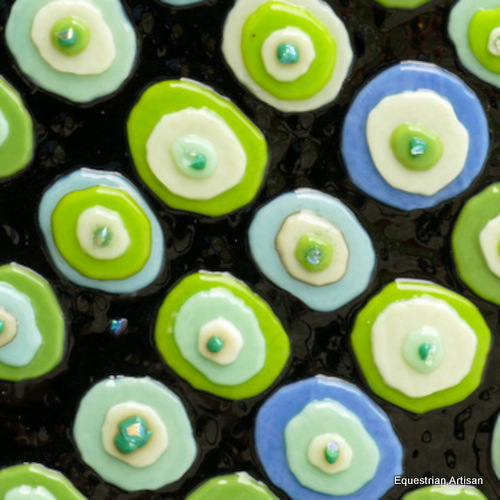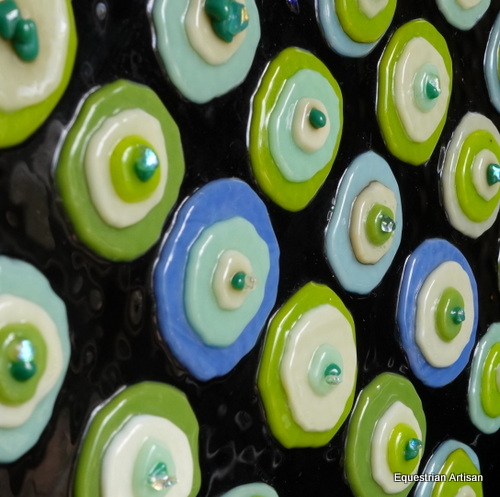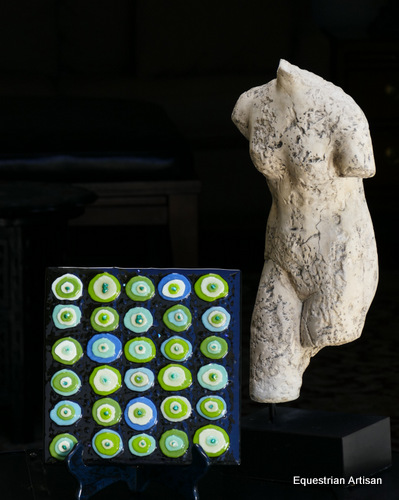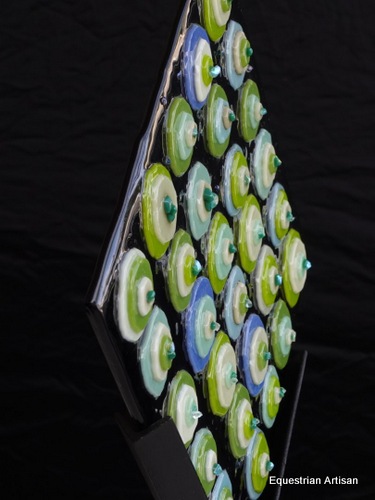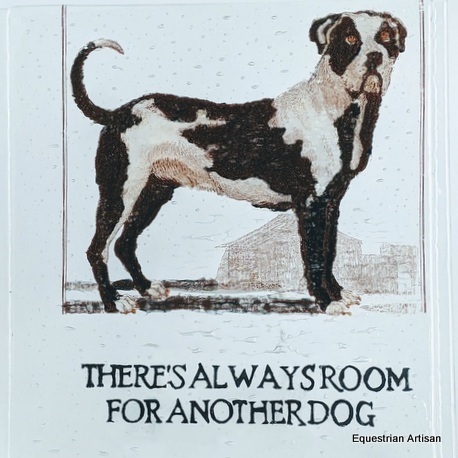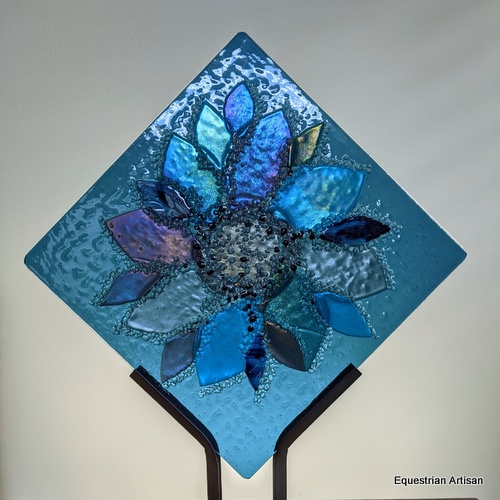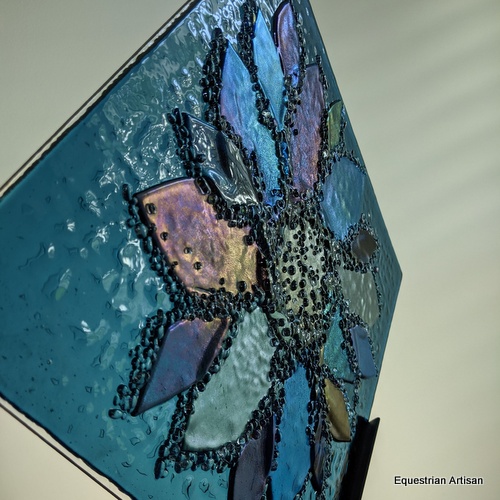Petit Fours Study In Reactive Art Glass Panel – 9.5″ X 9.5″
$229.00
This fabulous panel is part of our Serendipity Collection of art glass home decor. It is 9.5″ x 9.5″.
This piece is an experiment in color and chemistry. Glass colors are created by adding minerals and elements to clear glass. Some colors contain ingredients that react with other colors under the right conditions. This is especially true of copper and sulfur. Glass containing copper is generally blue or green, and sulfur is found in warm colors including ivory, yellow, orange, red, and brown. These “reactive colors” are often used intentionally to generate special effects. It’s important to note that not all the colors in these hues are reactive. In this glass panel, an assortment of glass in these color ranges were randomly stacked on top of each other and fired. Where a reaction occurred, a black ring appears between the two pieces, as you can see in the close up photos. The panel’s strong graphic design and coherent color scheme against the black background make it uniquely appealing. Whether you’re adding something special to your own living space or looking for a perfect gift for someone special, this unique art glass study will be a focal point in any home.
Creating it was a 3-step process.
Creating the Color Samples: Various-sized circles were cut from a wide assortment of green and blue glass, some of which we hoped contained copper. The same was done with ivory and white glass. (Although white is generally non-reactive, it is available in a formulation that reacts with copper.)
Assembling the Panel: A square of rich black was selected for the background. Thirty 3-layer stacks of glass were assembled, mixing the colors at random. Each was topped with a small piece of clear dichroic glass. They were placed on the background glass using glue to hold them in place in preparation for firing.
Firing in the Kiln: The panel was carefully placed in the kiln and tack-fused. This means it was heated to 1350 degrees, the temperature at which glass melts just enough for pieces to stick together but not enough that they melt and lose their shape.
Description
This fabulous panel is part of our Serendipity Collection of art glass home decor. It is 9.5″ x 9.5″.
This piece is an experiment in color and chemistry. Glass colors are created by adding minerals and elements to clear glass. Some colors contain ingredients that react with other colors under the right conditions. This is especially true of copper and sulfur. Glass containing copper is generally blue or green, and sulfur is found in warm colors including ivory, yellow, orange, red, and brown. These “reactive colors” are often used intentionally to generate special effects. It’s important to note that not all the colors in these hues are reactive. In this glass panel, an assortment of glass in these color ranges were randomly stacked on top of each other and fired. Where a reaction occurred, a black ring appears between the two pieces, as you can see in the close up photos. The panel’s strong graphic design and coherent color scheme against the black background make it uniquely appealing. Whether you’re adding something special to your own living space or looking for a perfect gift for someone special, this unique art glass study will be a focal point in any home.
Creating it was a 3-step process.
Creating the Color Samples: Various-sized circles were cut from a wide assortment of green and blue glass, some of which we hoped contained copper. The same was done with ivory and white glass. (Although white is generally non-reactive, it is available in a formulation that reacts with copper.)
Assembling the Panel: A square of rich black was selected for the background. Thirty 3-layer stacks of glass were assembled, mixing the colors at random. Each was topped with a small piece of clear dichroic glass. They were placed on the background glass using glue to hold them in place in preparation for firing.
Firing in the Kiln: The panel was carefully placed in the kiln and tack-fused. This means it was heated to 1350 degrees, the temperature at which glass melts just enough for pieces to stick together but not enough that they melt and lose their shape.
Additional information
| Weight | 3.5 lbs |
|---|---|
| Dimensions | 14 × 14 × 4 in |




